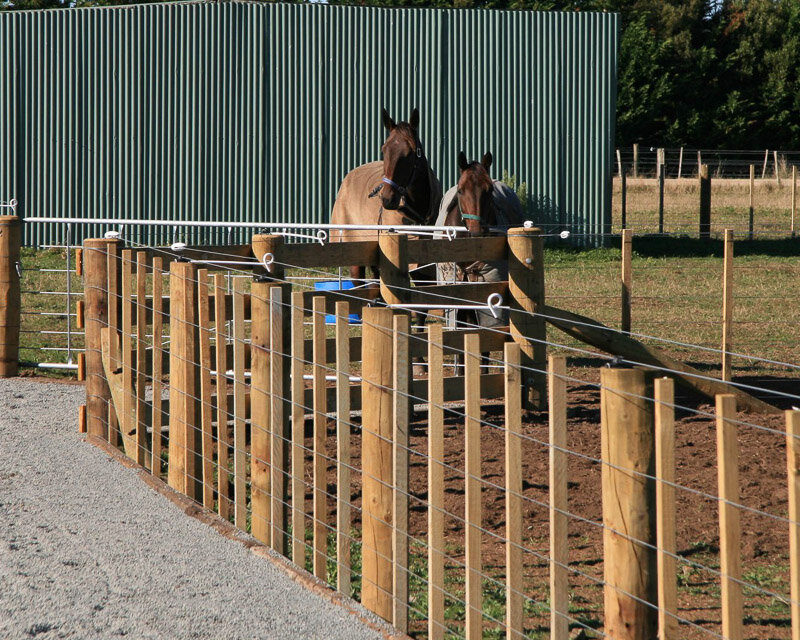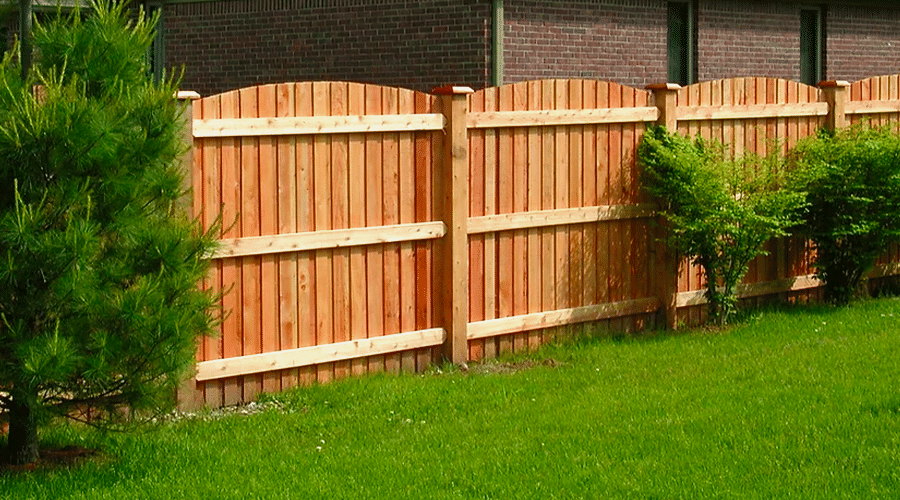Security Meets Style: How Fence Builders Combine Function and Design Perfectly
A Comprehensive Guide to Fence Install: What You Need to Understand About Secure Fencing Provider
When it concerns setting up a fence, you've obtained a lot to ponder. From picking the ideal materials to comprehending regional regulations, each step can feel frustrating. You'll need to assess your property and make a decision if you want to tackle the setup on your own or employ a professional. That's simply the start. Let's explore the crucial aspects that can make or damage your fence project.
Understanding Various Kinds Of Fence Materials
When you're picking a fence, understanding the various kinds of fencing materials is crucial. Each product offers unique benefits and downsides, impacting your decision. Wood offers a classic look and can be personalized, yet it requires regular maintenance and may rot gradually. Plastic is low-maintenance and durable, withstanding fading and bugs, yet it can be more expensive upfront. Chain-link fencing is cost-effective and useful for enclosing big areas, though it lacks personal privacy and visual allure. Steel fence, like functioned iron or aluminum, uses stamina and sophistication yet may require corrosion protection. Composite materials mix the ideal of timber and plastic, using durability with an all-natural look. Consider your budget, preferred visual appeals, and upkeep preferences when assessing these alternatives. Inevitably, selecting the ideal material will assist you produce a fencing that fulfills your requirements and enhances your residential or commercial property's worth.
Examining Your Building and Fencing Demands
Before you begin your fence setup, it's vital to examine your residential or commercial property boundaries and the objective of your fencing. Recognizing regional laws and permits will additionally help you stay clear of any type of legal problems down the line. By considering these factors, you'll ensure your fence meets both your needs and neighborhood standards.
Residential Property Borders and Lines
Recognizing your home boundaries is vital for an effective fencing setup, as it not just aids you determine where your fence will go however also guarantees you're respecting your neighbors' space. Begin by evaluating your residential property deed or study, which usually outlines the precise borders. You may also desire to seek advice from with a specialist land surveyor if you're unsure.
As soon as you have actually developed your boundaries, mark them clearly with risks or flags. This aesthetic help will certainly guide you throughout the setup and prevent any type of disagreements with next-door neighbors. Keep in mind, regional zoning regulations might determine fence positioning and elevation, so check those guidelines too. Taking these steps assurances your fence is effectively positioned and compliant, making the whole process smoother for you.
Objective of Fencing
Secure fencing offers numerous purposes that can significantly boost your residential or commercial property. It gives security by creating a barrier that prevents trespassers and safeguards your belongings. Second, it offers personal privacy, enabling you to appreciate your outside area without worrying regarding spying eyes. Third, secure fencing can specify your residential or commercial property borders, making it clear where your space ends and your neighbor's starts. In addition, it can enhance the aesthetic charm of your home, adding personality and design while increasing visual charm. Ultimately, a well-placed fence can assist take care of noise from neighboring roadways or neighbors and also keep pets and children secure. By reviewing your certain needs, you can choose the right type of secure fencing to accomplish these advantages effectively.

Local Laws and Permits
Just how can you ensure your fencing installment abides with local regulations? Beginning by examining with your regional zoning office or local internet site. Fence Company. They usually have guidelines about fencing elevation, products, and placement. You'll additionally wish to discover out if you need a license prior to starting your task. Some locations call for permits for any type of new fencing, while others might only require them for taller frameworks.
In addition, think about building lines and any type of easements on your land. Noting your limits can avoid conflicts with next-door neighbors or possible legal concerns. By understanding these regulations in advance, you can avoid pricey mistakes and identify your fencing is developed to last, boosting both your home's value and your assurance.
Local Rules and Permits for Fencing
Before you start your fence task, it is very important to inspect local laws and get any type of essential licenses. Each city or region has its very own guidelines pertaining to fence height, materials, and positioning. These guidelines guarantee that your fence adheres to safety standards and area visual appeals.
You may require to send a fence plan, describing dimensions and products. Some locations might even need a study to confirm residential property boundaries.
Disregarding to adhere to these policies can bring about penalties or required removal of your fencing, wasting both money and time. So, take the time to research and safeguard the proper permits for a smooth installment process. This action is important in seeing to it your job straightens with regional regulations and community standards.
Picking Between DIY Installation and Specialist Services
Are you taking into consideration whether to tackle the fencing installation on your own or employ a professional? This choice rests on numerous official statement aspects. Assess your skill degree. If you're helpful and have experience with comparable tasks, DIY could conserve you cash. However, be sincere regarding your abilities; mistakes can bring about added costs and migraines.
Mounting a fencing takes time, and if you're juggling a hectic routine, employing a specialist can assure it obtains done successfully. If your backyard has difficult terrain or certain design requirements, specialists bring knowledge that can make a difference.
Last but not least, variable in local regulations. An expert recognizes the permits and codes required, assisting you stay clear of potential penalties. Ultimately, consider your skills, time, complexity, and policies to make the ideal choice visite site for your fencing job.
Step-by-Step Guide to Fencing Installation
As soon as you've decided to progress with your fence installation, complying with an organized detailed method will certainly guarantee a smooth procedure. Beginning by noting the fence line with risks and string to envision the layout. Next off, check regional policies to confirm compliance with height and home lines.
Dig post openings a minimum of two feet deep, spaced according to your fence type-- commonly 6 to 8 feet apart. Put the messages into the openings and load them with concrete for security. As soon as the messages are established, affix the horizontal rails or panels, making certain they're level.
Protect the panels or pickets, validating they align correctly. If you're using gateways, install them last, ensuring they turn easily. Finally, look for any type of loose links and make necessary adjustments. Your fencing needs to now prepare to boost your residential property and offer the privacy or protection you need!
Upkeep Tips for Longevity of Your Fencing
To keep your fencing looking excellent and enduring longer, routine maintenance is vital. You need to establish a cleaning timetable, inspect for any type of damages, and use protective finishings as needed. By staying aggressive with these jobs, you'll guarantee your fence continues to be durable and attractive for years to come.
Routine Cleaning Schedule
While it could be very easy to forget, developing a regular cleaning routine is necessary for preserving the durability of your fencing. Begin by washing your fence with water a minimum of once every period to remove dust and debris. For wooden fences, make use of a mild soap option and a soft brush to scrub away any type of mold and mildew or mold. Don't fail to remember to look for any kind of rust on steel fencings; a cord brush can aid eliminate it, complied with by a coat of rust-resistant paint. If you stay in a location with hefty plant pollen or dirt, you might desire to raise your cleansing regularity. Keeping your fence clean not just boosts its look yet additionally expands its life, saving you cash in the future.
Check for Damages
Regularly checking your fence for damages is vital if you intend to preserve its stability and long life. Start by walking around your fencing to search for visible indicators of wear, such as cracks, loose boards, or rust. Pay special focus to the base and articles, where moisture can create substantial concerns. If you observe any damages, bear in mind and determine the urgency of repair services. Addressing little concerns immediately can avoid them from rising into bigger, extra pricey problems. Look for any indicators of bugs, like termites or woodpeckers, that can endanger your fencing's structure. Confirm that your fencing stays stable by examining for any type of leaning or sagging sections. Routine inspections will certainly keep your fence looking excellent and working appropriately for many years to come.
Apply Protective Coatings
After evaluating your fencing for damage, applying protective coatings is a key action in ensuring its long life. Depending on the product, you'll want to select the right sort of coating. For wood fencings, a high-quality sealant or timber discolor can avoid wetness absorption and discourage parasites. If your fencing is plastic or metal, think about a UV-protective spray or paint to avoid fading and corrosion.
See to it to clean the surface area thoroughly prior to application, as dust and gunk can threaten the finish's efficiency. Use the layer in completely dry weather for much better adhesion, and don't forget to adhere to the supplier's instructions for the best results. Routinely reapply every couple of image source years to maintain your fencing looking great and standing solid against the components.
Price Considerations and Budgeting for Your Fence Job
When preparing your fencing job, comprehending expense factors to consider is necessary to remaining within spending plan. Begin by identifying the type of product you desire, as expenses can differ greatly between timber, plastic, and metal. Do not fail to remember to aspect in labor costs-- working with experts may conserve you time yet can enhance your overall expenditures.
Next, determine your building to calculate the linear footage required, as this straight influences product expenses. In addition, consider any licenses you may require, which can contribute to your budget.

Last but not least, it's an excellent concept to reserve a backup fund for unexpected costs. By intending carefully and thinking about these factors, you can create a practical budget plan that meets your fencing requires without damaging the bank.
Frequently Asked Concerns
How Lengthy Does the Ordinary Fencing Installation Take?
The average fence setup normally takes one to three days, depending upon the fence kind and dimension of your yard. You'll need to take into consideration any kind of delays because of weather or permit requirements also.
What Should I Do if My Fence Is Harmed?
If your fencing is damaged, initially examine the degree of the damages. Repair small problems yourself, however, for significant problems, take into consideration contacting an expert. Do not wait too long; it'll assist prevent even more complications.
Can I Mount a Fence on an Incline?
Yes, you can mount a fence on a slope. You'll require to adjust your installment method, either by stepping the panels down or utilizing a racked layout to ensure stability and proper positioning with the surface.
What Are the Finest Practices for Fencing Painting?
To paint your fencing properly, begin with proper cleansing and sanding. Use top notch paint and use in even strokes. Don't neglect to choose the ideal weather for painting, guaranteeing it's completely dry and light.
Exactly how Usually Should I Evaluate My Fencing?
You ought to check your fencing at least twice a year, concentrating on indicators of damages, rot, or corrosion. Routine checks help you capture problems early, ensuring your fence remains durable and visually appealing much longer.